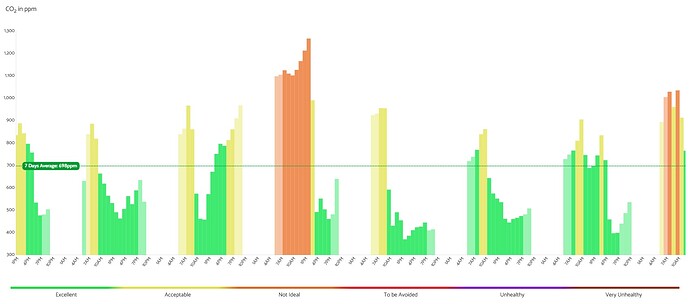My unit has been operating well, thank you. I do shut my WiFi off overnight so there are some gaps in the data.
For the past 5-6 months I’ve noticed an increase in CO2 and TVOCs. I’ve pasted the CO2 week chart below. ChatGPT says there is some correlation. Both values drop when a door and window are opened.
I changed both the gas furnace filter and fresh air ventilation filter on Sept 4. I will take the AirGradient outside today to let it recalibrate. I have a couple of situations that might be contributing, including a powder room that has been left demo’d for a few years (toilet reinstalled - unused - flushed occasionally, sink drain covered in plastic), a first floor laundry drain that has an odor when the washing machine is used, the washing machine door that is left open to let it dry after a wash, and there may be other sources…
Nothing has really changed over the past year so this may be difficult to track down. From what I read best approach may be to let the sensor calibrate, then move it from one room to another, I guess on the same day when the reading is high, to try to narrow down the source. First I might just open things to get good readings, then close and see how long it takes to increase.
Am I correct to include sewer gas as a possible source? Am I on the right track generally?
TIA.
